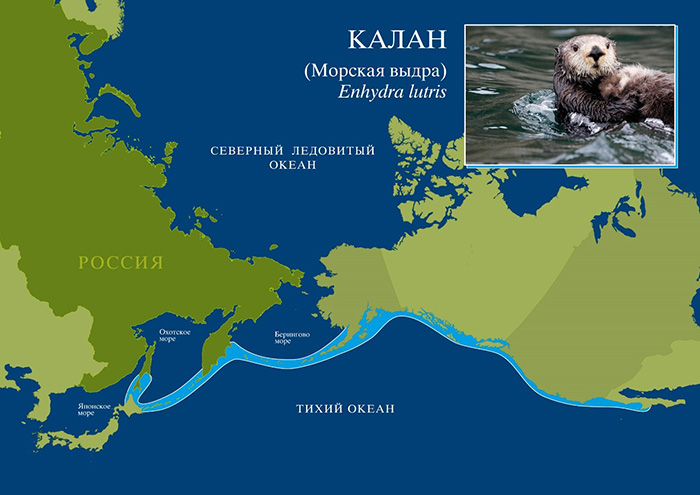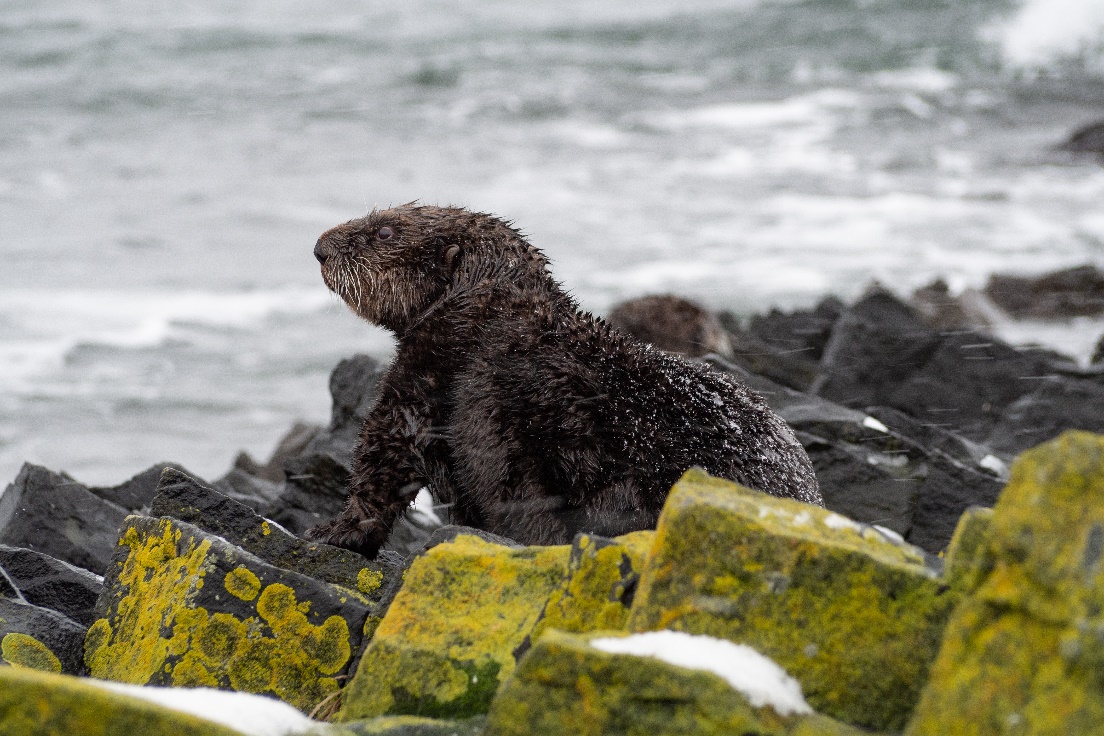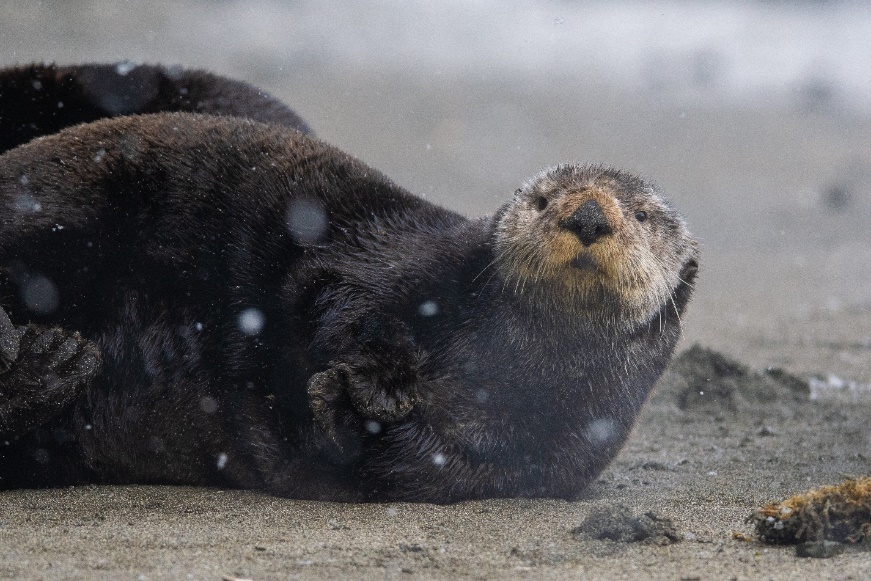WWF Russia and Kinder®will help the CINBR understand the reasons for the decline in the population of perhaps the cutest inhabitant of the islands - the sea otter. The Commander Islands Nature Reserve is grateful for the help of WWF Russia and Kinder®- organizations that are conserned about the future of the Pacific Ocean and the entire planet. The financial support of these organizations will allow us to carry out a number of important works.

Sea otter areal is marked in blue
Sea otters Enhydra lutris are endemic to the northern Pacific Ocean. These intelligent animals are distinguished by a special thick coat and unusual behavior. Read more about these amazing animals on our website .
The sea otter has a difficult history. For the first time, the mass sea otter hunt on the islands was organized by members of the Vitus Bering expedition (1741-1742), who brought 700 sea otter skins from Bering Island. All subsequent expeditions exported up to 1,500 sea otter skins on average. Such intensity of harvesting led to the fact that already in 1756 on Bering Island not a single sea otter could be cought. After the almost complete destruction of sea otters on Bering Island, the fishery moved to Medny Island.

In winter, when algae fields are destroyed, sea otters go to the shore at night to rest. Photo by Dmitry Strakhov
Only in 1924 the end of the sea otter harvesting was announced. The reappearance of sea otters on Bering Island has been recorded since the early 1970s. The population began to recover and by the end of the 20th century reached 5000 individuals . A sharp increase in the number of these marine predators began to affect the entire ecosystem: the number of large crabs, craboids, sea cucumbers, and octopuses decreased. And the biomass of sea urchins - an important prey of sea otters - in the coastal zone has decreased by 100 times.
In 2020, the CINBR confirmed the fears that had long been in the air - the sea otter population began to decline again, and quite rapidly. On the territory of the reserve, the number of sea otters has decreased by half in four years. Currently, the number of the commanders' group of sea otters is estimated at 1,700 individuals. The staff of the reserve monitors the water area adjacent to the Commander Islands and sea otter rookeries all year round. In recent years, no cases of poaching have been recorded, this reason can be excluded. But have we become closer to the solution?

Historically, the sea otter, like the northern fur seal, suffered catastrophic extermination on the Commander Islands. Photo - Alexey Perelygin
“We consider both natural and anthropogenic reasons as possible drivers of negative changes. The former include a possible reduction in biomass and the availability of forage benthos. The second is the pollution with harmful substances and heavy metals, climate change. Outbreaks of diseases, including those transmitted from domestic animals, may also be to blame for such a sharp drop in numbers. Recently, there have been confirmations that carnivorous killer whales actively hunt sea otters in the waters of the Commander Islands. Therefore, before drawing conclusions about the possible reasons for the decline in the number of the species, one should understand in detail each hypothesis. And the help of WWF Russia and Kinder®in finding answers to these questions is invaluable for us," said Evgeny Mamaev, Deputy Director for Science of the CINBR.
.jpg)
Under water, the sea otter collects a large number of mollusks, which it eats on the surface of the water lying on its back. Photo by Mikhail Vakurov
The financial aid will help the CINBR to carry out laboratory tests and large-scale research using unmanned aerial vehicles and sonars. A comprehensive study of the entire food chain from sea otters to sea urchins and algae will make it possible to draw up an accurate map of the distribution of sea otters within the reserve and identify the most vulnerable spots in this chain.
Data collection will continue throughout the 2021 field season. It is too early to say when the analysis of the information received will be completed. It may take more than one year for the formation of final conclusions about the reasons for the decline in the number. We are eager to start working and thanks to WWF Russia and Kinder®we will be able to better understand the entire ecosystem of the islands. Only with proven, detailed data can we make effective decisions to protect the world's most furry animal.









.jpg)
